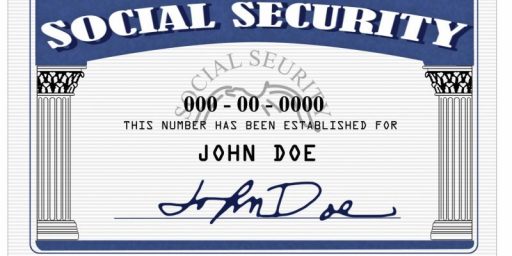Retirement Investing Advice
James Glassman observes that good retirement planning is like getting good at golf: the best way is to start young.
Let’s do the numbers. The average annual return for U.S. large-company stocks (as represented by the Standard & Poor’s 500 Index) for the past 80 years has been about 10 percent after transaction expenses but not taxes. Say your goal is to build a nest egg of $1 million by the time you are 55. If you start at age 24 and invest $5,000 a year at an average return of 10 percent annually – through, for example, an index mutual fund or exchange-traded fund (ETF) – then you’ll reach your goal. But if wait until you are 34 to start, you’ll accumulate only $357,000 by age 55. If you start at age 44, you’ll have just $107,000.
Here’s a second example, even more dramatic: One investor, call him Ishmael, begins, at age 25, to put $2,000 a year in a low-expense mutual fund with an average return of 10 percent annually. At age 35, he’s put $20,000 into the fund. Then, he stops investing entirely. But, of course, the value of Ishmael’s holdings keep rising, and, by the time he is 65, he has a portfolio worth $556,000. (We are assuming this is a tax-deferred account like an IRA or 401k).
Now, consider a second investor, Isabel. She, too, invests $2,000 a year at 10 percent, but she waits until age 35 to start. She keeps investing for a full 30 years — a total of $60,000 out of her pocket. At age 65, Isabel’s got just $329,000.
In other words, those extra 10 years (between ages 25 and 35) produce 70 percent more money for Ishmael at retirement time, even though Isabel’s out-of-pocket investment is three times greater.
Variants on the second example abound in the lore of investment planners. The problem, of course, is that $5000 a year is a lot of money to the average 24-year-old. That was especially true 10, 20, or 30 years ago.
I actually followed the Ishmael model, albeit on a smaller scale. On the advice of a mentor, I started monthly investments into a mutual fund and an IRA as a brand new lieutenant back in 1988. I kept it up for the four years that I was in the Army and put half of all my pay raises into the funds, too. Then, I went back to graduate school and put nothing away for several years before earning a decent enough living to resume my investments.
Aside from owning one’s own business and building wealth that way, the surest way to build enough wealth to retire comfortably would seem to be to buy real estate in a high cost area and then retire in a low cost area. Trying to do it by putting away money while in one’s twenties is nice in theory but highly improbable in reality.





Personally, I don’t buy into the idea that we can continue to expect a 10% return anymore (using the last 80 years as your base is a good way to crash and burn in todays economy)…not that I don’t contribute, but I don’t have the faith in that kind of return. I plan on 5-6% and anything more is gravy. After getting creamed a few years back, it is going to take a few years to get my averages back up. Perhaps I am just too pessimistic.
Of course, you could combine the two, put away money and then use it buy the real estate. (Of course, then you cross you fingers and hope that prices keep going up!)
Jonk makes a good point. 10% a year is average return but not the geometric average. 5%-6% is closer to the geometric average. What that means is that volatility reduces your absolute return.
For instance, if you invest a dollar and the stock goes down 10% the first year and then up 20% then second year, you have an average return of 10% and a total value of $1.08 or a total return of 8% over two years.
If you invested that dollar in another stock that goes up 10% the first year and 10% the second year, you’ve got the same average return but now you have $1.21 or a total return of 21% over the two years.